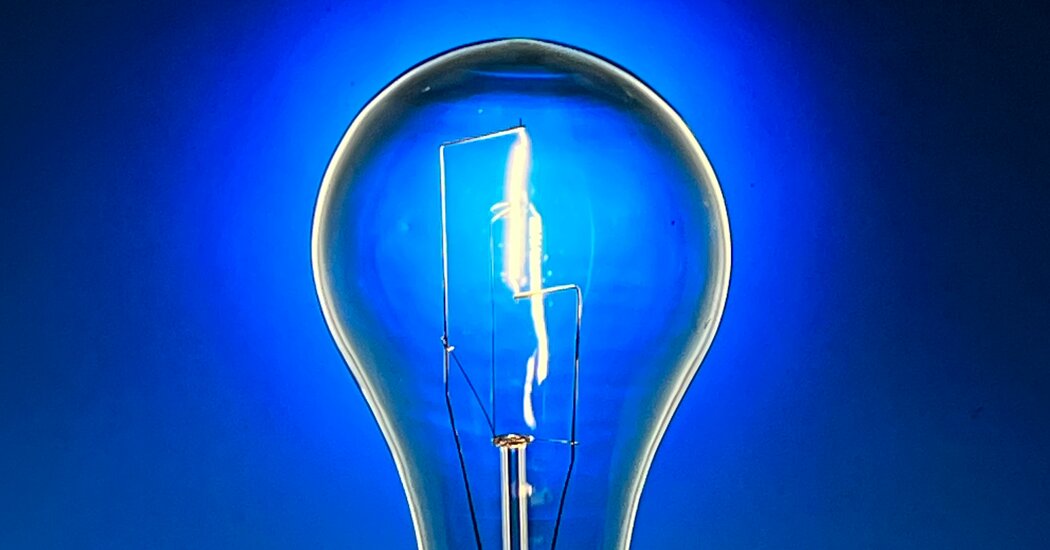The switchboard at Lightbulbs.com, a (pretty self-explanatory) e-commerce website, lit up with panicked callers on Tuesday, who all wanted to know if
The switchboard at Lightbulbs.com, a (pretty self-explanatory) e-commerce website, lit up with panicked callers on Tuesday, who all wanted to know if the news was true.
Had the government just banned the sale of incandescent bulbs?
Yes, mostly.
Was this decision part of an elaborate political plot?
No, mostly.
Just what were fans of incandescent lighting supposed to do now?
EBay, maybe?
Just like its cousin, the gas stove, the humble light bulb has become a flashpoint in a cultural squabble between regulatory efforts to curb energy consumption and the very American impulse to do whatever one wants in one’s domicile. But unlike the gas stove debate, which grew so heated (sorry) that it drew legislation from Republicans hoping to protect the noble but possibly dangerous appliance, the ban on the sale of most incandescent bulbs went quietly into effect on August 1. (The Biden administration denied trying to ban gas stoves.)
The response to the bulb ban was more of a whimper than a battle cry.
“Thomas Edison brought the incandescent light bulb to the masses, and in 2023 Joe Biden banned it in America,” officials with the Republican Party of New Mexico wrote in a tweet. “The Biden administration’s government overreach continues.”
Other critics were more concerned about the quality of light affecting their quality of life: “I often stay up late at my desk, and the warm glow of the lamp is like company as I read and write. Ugh. There are people in power who are dedicated to sucking all joy out of the world,” Joseph Massey, a self-described “not woke” writer, tweeted.
Paul McLellan, who owns Lightbulbs.com and whose family has sold lighting since the 1950s, said that the move was better for the environment but kind of bad for sales.
“We’ve been trying to get the word out there, and nobody is talking about it,” said Mr. McLellan, whose 15 call-center employees have become lighting therapists for distressed callers overnight. “These are little heaters that we are lighting our homes and business with.”
Mr. McLellan added that he had to agree “logically” that the bulbs “are not environmentally friendly,” even though he was lamenting the loss in sales from what he said was a poor rollout from the government and media. Still, he called the story of the vanishing light bulb a “bipartisan issue,” which is correct.
The saga began 16 years ago, when President George W. Bush signed into law the Energy Independence and Security Act of 2007. The law did not ban the sale of incandescent bulbs, but required bulbs that used between 40 and 100 watts of electricity to gradually become more energy efficient.
Just before President Barack Obama left office in January 2017, his administration enacted further regulation around several types of incandescent bulbs.
Then came President Donald J. Trump, who wiped out the Obama-era regulations and added a personal note about his dislike of energy-efficient lighting.
“They took away our light bulb,” Mr. Trump said, incorrectly, in 2019. “I want an incandescent light. I want to look better, OK? I want to pay less money to look better. Does that make sense? You pay much less money, and you look much better.”
That, too, was untrue: New bulb models, called LED bulbs, cost more upfront but last longer and use less electricity, which equals a lower utility bill, according to experts.
In another speech, Mr. Trump said energy-efficient bulbs always made him “look orange” — more of an opinion than fact.
President Biden, who has been under pressure to take further regulatory action to protect the environment, undid Mr. Trump’s undoing of the regulations by announcing new rules. The Energy Department said last year that the manufacturing and sale of incandescent bulbs would be gradually phased out in 2023. Recent polling shows that a majority of Americans support the federal government setting stricter efficiency standards for appliances and buildings.
According to a timeline released by the department, manufacturers were told to stop making the bulbs in January. On Tuesday, retailers like Mr. McLellan were told to stop the sale of them.
In a statement on Tuesday, the Republican National Committee said that incandescent bulbs were another casualty of “Biden’s unhealthy obsession” with reducing carbon emissions.
Not all versions of the bulbs will be banned, but it will become increasingly hard to find the everyday versions of them, like those that provide that flattering light in the dining room or study. It could be harder to find bulbs by wattage as a metric associated with LEDs, called the lumen, becomes the standard. Some types of incandescents will still be available, including bug lamps and “odd sized” bulbs, according to a roundup by CNN.
One of the concerns of retailers, according to Mr. McLellan, is that unsold bulbs will have to be disposed of, likely in landfills: “If you’re truly thinking about the environment, shut off manufacturing and let distribution sell through,” Mr. McLellan said.
On Tuesday, a spokesman with the Energy Department, who was not authorized to speak publicly, said that the agency’s “enforcement office is committed to enforcing the agency’s regulations in a fair and equitable manner,” and urged retailers to contact the agency about “flexibilities with their inventory.”
www.nytimes.com
